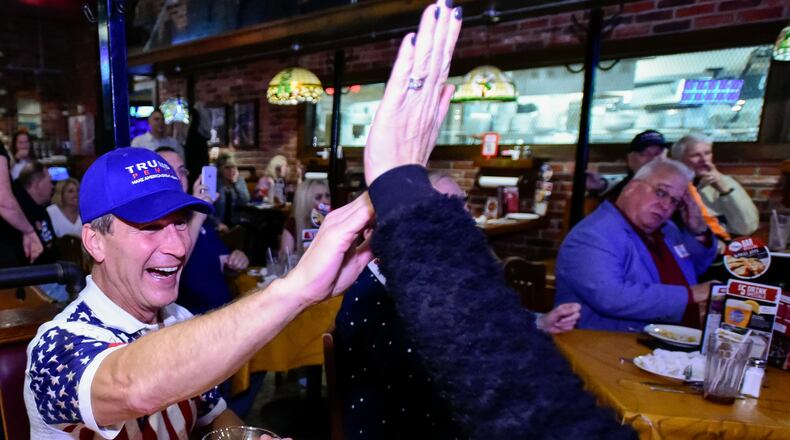“This Trump coalition transforms the (political) map in fundamental ways and is building on a coalition of voters who have traditionally been left out of American politics,” said Xavier University political science professor Mack Mariani, referencing the white working class voters of the Midwest.
Campaign 2016 came down to Trump’s following among white voters, especially non-college-educated men, versus Hillary Clinton’s support among women, minorities and young people.
Clinton’s support among women was roughly even with the support that women gave Barack Obama in 2008 and 2012. The bigger factor in this year’s wide gender gap: less-educated white men, who favored Trump far more heavily than they did Republican Mitt Romney in 2012 or GOP nominee John McCain in 2008.
Trump, who once famously declared that he loved the uneducated, got plenty of love from white voters who never graduated from college: He got 7 in 10 votes from non-college-educated white men and 6 in 10 votes from non-college-educated white women.
Clinton, meanwhile, got the support of less than a quarter of white men without a college degree. Clinton did make some inroads with college-educated white women. Just over half supported her, while four years ago just over half of that group had backed Romney.
“I think (Trump) spoke to the common man,” said Pam Sackenheim, a non-traditional sophomore student at Miami University Regionals. “I don’t think America was ready for a woman president.”
———
RELATED: How did a computer and a professor predict Trump’s win?
SOCIAL: Follow Ohio Politics on Twitter and Facebook
MORE: Visit Journal-News.com for more on what happens now that Trump won
———
In a post-election discussion with Miami University Regionals students in Hamilton on Wednesday, political science professor John Forren said the election results were “a pretty significant political development that a lot of us are stunned about, including those of us who are trained in political science.”
Diego Sanchez, a 20-year-old sophomore at Miami Hamilton, said he was shocked to see that Democrats lost Florida.
“I can’t believe that after (the) Orlando (shooting) that Florida went red…” he said.
Forren said a few thousand-vote shift in states like Florida, Michigan or Pennsylvania would have meant a “very different conversation” the day after the election.
Easy to figure out Clinton’s loss
Cedarville University political science professor Mark C. Smith said looking back on the results, finding out why Clinton loss “is easy to piece together.”
“The polls were somewhat wrong because they were based on demographics and turnout from the 2008 and 2012 elections,” he said. “There was an assumption, to a degree, that Mrs. Clinton could replicate Mr. Obama’s turnout, especially among African-American communities. She was unable to do that.”
Also, the same polling models weren’t off in the primary when they all forecast Trump’s rise, said David Niven, a political science professor at the University of Cincinnati.
“I think the bottom line is Trump had a hard-to-quantify connection with the white working class and a surprising ability to hold the support of people who had grave concerns about him,” he said “And we really didn’t see (the polling issues) in the primary season. If you think Trump was an un-pollable candidate, we should have had trouble gauging his status in the primary.”
Also, Smith said he needs to compare the results with the last polls because they polls may not have been wrong in as much as they fell within the margins of error.
“Polls are simply not that exact to be precisely right all of the time,” he said.
This article contains additional reporting by the Associated Press.
About the Author

